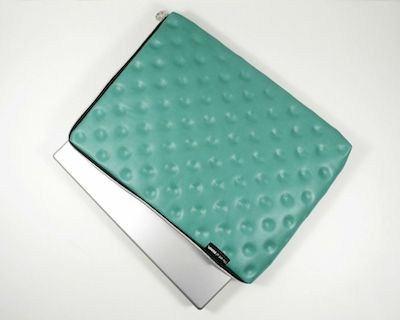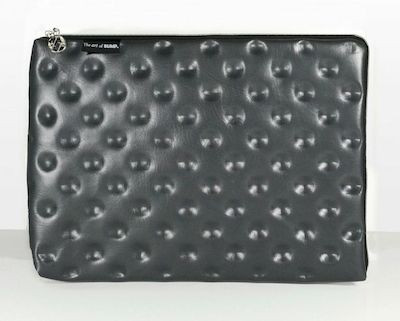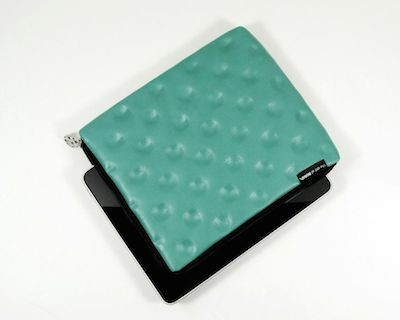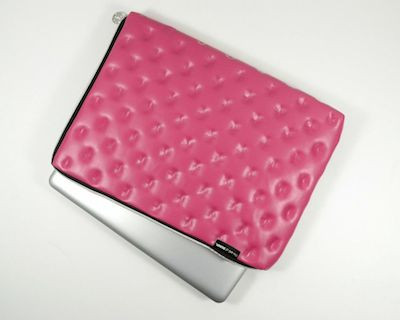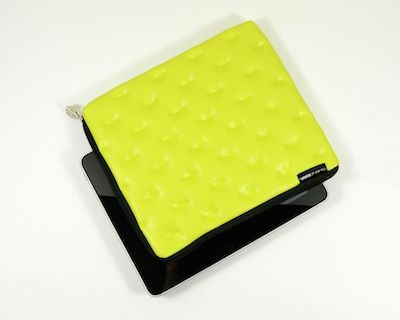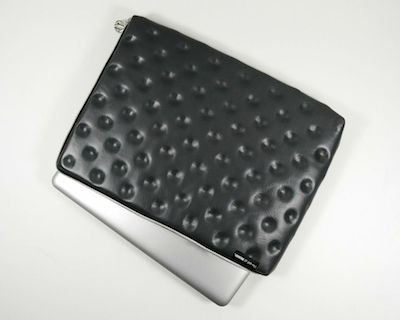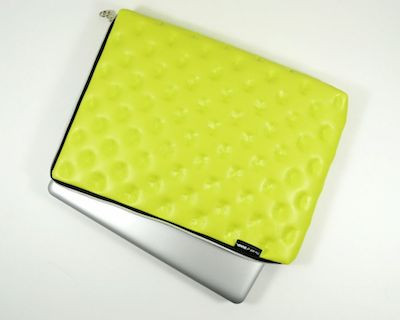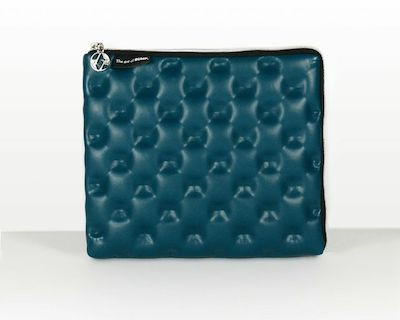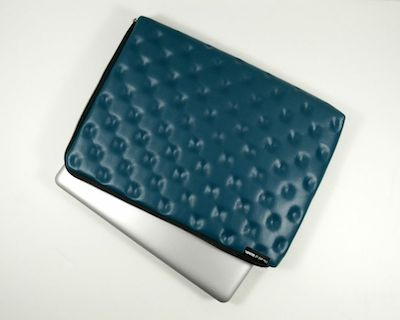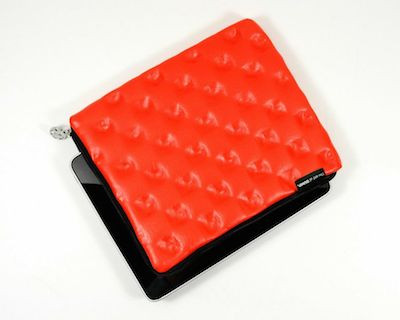TRENDER: Artist Anthony Giannini
Wednesday, March 19, 2014
Who are the Rhode Islanders leading in arts, fashion, food, and style? They're Trenders, and GoLocalProv offers a glimpse of the people you most want to know on the scene. Today's Trender is Anthony Giannini, a modernist artist and a 2012 graduate from the Rhode Island School of Design.
Giannini is a recent recipient of a MacColl Johnson Fellowship through the Rhode Island Foundation along with former GoLocalProv Trenders, Daniel Sousa and Leslie Hurst. A number of the artist’s works from his Crossing the Line series were moved from his Pawtucket studio for a solo exhibition in Puerto Rico at Walter Otero Contemporary Art this past February. Images of Giannini’s work can be accessed through his personal website.
The RISD graduate produces works on canvas that range in size from 5 x 8 feet to as large as a full-sized billboard. The paintings featured in Crossing the Line contain a multitude of abstract and representational images, which can initially overwhelm the viewer. After the preliminary visual-induced paralysis wears off, viewers can arrive at intense personal connections with the 30 year old artist’s massive works.
GET THE LATEST BREAKING NEWS HERE -- SIGN UP FOR GOLOCAL FREE DAILY EBLASTAnthony Giannini incorporates a head-spinning assortment of artistic mediums including neon spray paint, acrylic, toner, and an expansive archive full of 20th century photographs. The latest series derives from both historical and recent depictions of line-crossing ceremonies, in which sailors conduct hazing rituals for new members of the crew while the vessel traverses the Equator. While some of these oceanic rites were innocent and playful, other ceremonies subjected young seafarers to vicious forms of hazing. Giannini discovered these images as an artist-in-residence at Denniston Hill and has built a large body of work centered on the idea of power and vulnerability. This young painter has already made a major impact on the local community during his few years in Rhode Island, so one could imagine that if given the proper opportunities, Anthony Giannini could continue to make great strides in his studio practice.
When did you first decide that you wanted to become an artist?
While growing up I was really interested in comics, video games, music, and military history. My father served in Vietnam and I think a lot of my interests with the body exposed to physical and psychological trauma stems from his stories and the toll it took on his body and his mind. Eventually these themes intersected and I decided to take up painting during my sophomore year at Michigan State University. I ended up getting a job at the Kresge Art Museum and the Fine Arts Library to help supplement my studio courses. However, the professionalization of my practice came soon after. After receiving my BFA I began working full time for an artist for two years. That experience really reinforced the idea of earning my master’s.
How have your experiences in the state of Rhode Island and at the Rhode Island School of Design affected your artwork?
Rhode Island is a very conducive environment to work in without too many distractions. I moved here in 2010 to earn my MFA at RISD and once I graduated in 2012 I stuck around and found an empty mill in Pawtucket where I’ve been working since. The last two years have felt like a dirt-cheap-post-grad-residency. It’s been amazing. Rhode Island has given me the time and space to decompress and move beyond my thesis work.
RISD really helped me hone-in on the sort of dialogue I wanted my work to have. The obstacles that my professors put me through helped redefine my own notion of painting. I had to quickly learn that everything prior to grad school didn’t matter anymore. What I would decide to take from the critiques and how I would engage that in the studio is what mattered most. For me it was all about opening up the theoretical “lid” of my studio practice to see what I was capable of pulling out.
How do you decide which mediums to use in your various works of art?
That has a lot to do with the materials I started working with while in grad school. I found myself trying to keep up with ideas and image making rather than perfecting what I came into school with, which was a more academic style of oil painting. At RISD I was mainly working with solvent, inkjet, and toner transfers alongside oil, acrylic, and collage. Whatever materials and processes I felt were necessary got the green light. Since I work from photographic references I once had a professor tell me that when you’re looking at an image, everything you need to know about how to make that image is right in front of you. It’s all about the process of breaking it down into manageable forms. So for me, this translated into a multi-process approach towards painting.
When I graduated I spent half a year fully testing the limits of each process that I had been working with while at RISD. I did this in order to eliminate certain techniques from my practice that I felt I had exhausted. When I started the Crossing the Line series, I began working only with acrylic, airbrush and toner on canvas.
How do you plan to use the $25,000 grant that was awarded to you by the Rhode Island Foundation through the MacColl Johnson Fellowship?
The MacColl Johnson Fellowship has allowed for access to equipment was previously out of reach up until now. It will go towards securing studio rent, research, studio equipment, and production costs for a few projects coming up in 2015-2016. I’ve had my eye on a Roland 30” vinyl cutter, a 36” OCE printer, and an industrial airbrush system for a long time, but never had the funds to make that kind of investment. While working, I jot down new techniques or different methods to consider down the line. It’ll take a few months just to learn the software and sync things up with how to approach the new work. The ability to work with large format stencils, toner transfers, airbrush, and oil rendering are a few of the possible upcoming challenges. The MacColl Johnson Fellowship has expedited that goal I have for the work.
Why do your paintings appear on such large canvases?
It has to do with the type of involvement and participation I have with the work and provide for the audience.
The scale has a lot to do with the content. I think because of the complications within power structures, the work mimics exactly that. There is density and madness with very few moments of rest. This means there are times when the viewer cannot get passed the surface laden chaos. And maybe the paintings become containers to understand and confront these complications. Since I want to put a lot of issues back on the table, a larger scale seems to best accommodate the scope of the discussion.
When you found the line-crossing ceremony photographs in 2012, while an artist-in-residence at Denniston Hill, did you immediately know that you wanted to feature these pictures in your paintings?
It seemed like a clear starting point for my post-graduate work. I stumbled across the images while searching for the word “torture” on the internet. I originally thought I was looking at someone being water-boarded, except everyone was smiling and dressed in drag while aboard a ship at sea. So, I kept digging and felt it was the perfect stage for the work to situate itself within. It is interesting that the ceremony has undergone various transformations since the 16th century.
With its transformation to a more violent and hazing ritual, images and video began to surface, revealing visual details about the body in a type of traumatic experience. The inverse of power is vulnerability. There were certain images I used in the paintings that displayed both. The evolution from military culture to popular culture provided me with a set of parameters I could work in.
What do you hope your audience takes away from viewing your “Crossing the Line” collection?
With the Crossing the Line series I’m pushing the limits of recognizability through layering, while opening up spaces of associative projection for the viewer. Seeing is imbued with the responsibility of bearing witness to an extracted event from history and placed in the frame of representation. Besides the photographic referent as a way of seeing, there is another structuring device at work to offer the viewer a subjective and embodied experience in the act of witnessing: the experience of being ‘caught looking’. In a few of the works, there are several figures that showcase grins and smirks that awkwardly gaze back.
I have an excerpt from Daniel Harkett who wrote an essay for my work. He says, “the chair-bound or otherwise incapacitated figures, on the cusp of being manipulated in some way, including by forced immersion in water, summon Abu Ghraib and Guantanamo. The pictures are not so much a critique of “enhanced interrogation techniques” as an exploration of the destabilizing effects of consuming the torture era’s visual and textual culture. Giannini invites us to linger in a space of uncertainty where doubt corrodes trust in official institutions, where language turns into sinister doublespeak, and where boundaries, once imagined as solid, dissolve before our eyes.”
It’s funny because while making the work I’m not trying to illustrate the specifics mentioned. After the pieces are finished I sit with them for a while trying to make sense of it all. And that’s the type of involvement I think painting is capable of having. The finished works respond with even bigger questions than I had initially raised.
These scenes within the paintings are not simply about the good and bad, but instead signify the problematic nature of trauma. With the history of constraint and enablement, military might, social influence, persuasion, compliance, and the use of interrogation to control dissidence or opposition, I’d like the viewer to participate since these forms all trickle down and affect our public and private behavioral gestures.
What are your future artistic plans?
More research, art theory, and drawing.
Currently I’m working on a printmaking project with WOCA Editions. The suite will consist of four screen-prints, each with an edition of 25. These sorts of projects are an imperative component to future moves in the studio.
Related Slideshow: Tech Candy: RI-based Andrea Valentini’s Colorful Cases for iPads, Tablets & Laptops
Rhode Island-based designer Andrea Valentini "Tech Candy Collection" offers colorful technology sleeves in a signature BUMP texture, designed for iPads, tablets and laptops.
See a small sampling of some of the expansive Tech Candy Collection in the slides below...
Related Articles
- TRENDER: Chef Ben Sukle
- TRENDER: Natural Science Photographer Diana Brennan
- TRENDER: Wilbury Theatre Group Artistic Director Josh Short
- TRENDER: Academy Award Nominated Animator Daniel Sousa
- TRENDER: Chorus of Westerly’s Andrew Howell
- TRENDER: New Urban Arts Director of Programs Emily Ustach
- TRENDERS: Lily Ricci + Victor Bartash of Cape Commons Brewing Co.
- TRENDER: Accordion Master Cory Pesaturo
- TRENDER: Educational Game Designer Alan Tortolani
- TRENDER: Newport Architectural Historian John Tschirch
- TRENDER: Architect Christine West
- TRENDER: Fashion Designer Kate Brierley
- TRENDER: Observatory Design’s Cutter Hutton + Ayako Takase
- TRENDER: Artist + Writer Scott Simmons
- TRENDER: Glassblower and Metal Worker Kim Vredenburg
- TRENDER: Photographer + Jeweler Nancy Reid Carr
- TRENDER: Artist Toots Zynsky
- TRENDER: Green Penguin Electronics’ Benjamin George
- TRENDER: Rockstar Body Piercing’s Jef Saunders
- TRENDER: Artist and Teacher Leslie Hirst of RISD
- TRENDER: Midday Records’ Davey Moore
- TRENDER: Sculptor Boris Bally
- TRENDER: Author Stefana Albu
- TRENDER: My Little Pony Illustrator Mary Jane Begin
- TRENDER: Warren Jeweler LeeAnn Herreid




